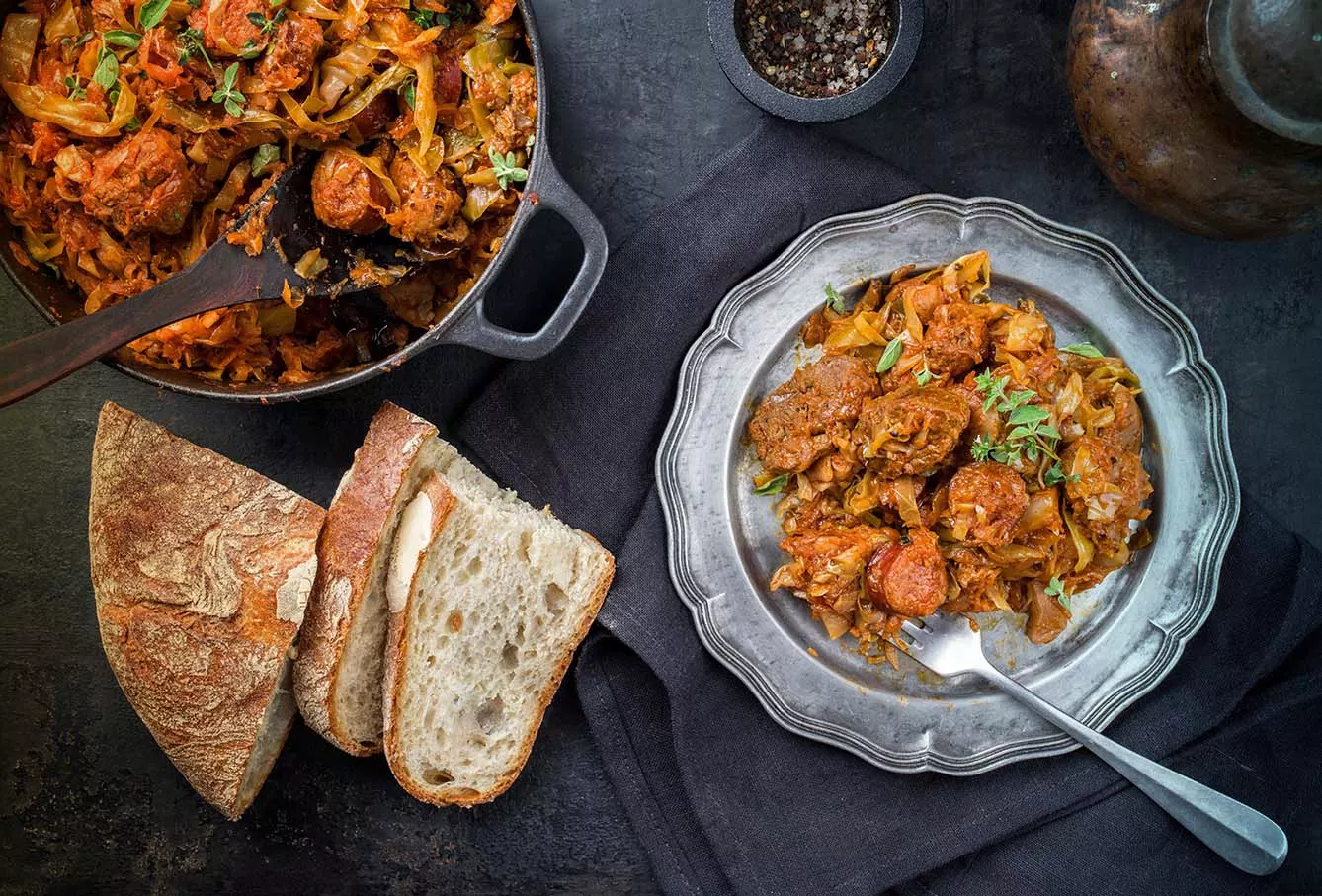There is but one culprit – bigos. A warming dish served in Poland mostly over the autumn and winter months, but also a favorite option during events and festivals all year round. The dish is far from humble and is packed with goodness despite its presentation being, admittedly, not overly inspiring. Still, it is bigos that is offered to visitors from abroad if they are interested in trying something traditional from Polish cuisine. Well, perhaps after dumplings.
Bigos – From riches to rags
Originally a rather rich dish got verified by the bitter reality of the 18th century. The first recorded recipes for bigos come from 1682 and are included in the first Polish cookbook – “Compendium Ferculorum” (of course, the dish was known a lot earlier than that). In the beginning, it did not contain any cabbage. Not that much, anyway. However, it contained stuff we never, ever dream of adding to bigos these days (like gooseberries, lemons, or a LOT of aromatic spices). It was a dish made from finely chopped meat, served in sour sauce. And the meats used were truly versatile. Hazel grouse, crayfish, venison. Take a pick!
Since contemporary bigos does not involve anywhere near as much meat, I can share with you what the name stands for without worrying it would spring back to your mind while enjoying a warm bowl of a few days old bigos (we will get to that). In old Polish, the verb “bigosować” meant to chop something up into tiny pieces. A verb eagerly used to… direct threats at your enemies and describe battles with swords that turned ugly.
When the lean years struck, the starring role of meat in biogs was gradually reduced to a bit part, with soured cabbage taking the lead. Eventually, it was mostly cabbage with some addition of meat. But then, who needed meat anymore when the cabbage version proved to be so delicious? And so it stayed.
United around the pot
Bigos made its way to Polish sayings, such as “niezły bigos!” [What a mess!] or “narobić komuś bigosu” [mess things up for someone]. It is present in literature, most famously in “Pan Tadeusz,” testifying to its significant presence in the everyday lives of Polish nobility at the time. During such gatherings as hunting events, it was popular to prepare the “cheering pot of bigos” [bigos z wiwatem]. They stewed the dish over the open fire in a pot.
The lid was secured tightly with some dough. When ready, bigos would explode from under the pastry-stuck lid (cheer), announcing it was good to be eaten. It was also considered polite to bring some bigos with you as a gift to your hosts when visiting, and also practical to take when traveling (you bring sandwiches? Boooriiing! A pot of bigos is so much better!) The quality of bigos, which makes it pretty economical, in the sense that it is safe to store for longer periods (you really have to try to let bigos go bad), is that the dish develops its flavors over time and tastes best after a few days. Just remember to warm it through.
Send your tastebuds where they haven’t yet been
The other day, my Ukrainian friend, Alina, was recollecting her thoughts when she first tried bigos. Already working on this little note, my hearing suddenly sharpened. “Aaand? How was it?” I asked, probably in an overly enthusiastic tone.
“It was like nothing I had ever tasted before. Very rich. Funky. I remember I was not sure whether I liked it. But when I got to the bottom of my plate, I felt like a second serving could help me decide. I have had many servings since. And find the dish utterly lovely.” And there you have it. There is this umami quality to bigos that wipes out any doubts. You should try it sometime. Be warned tho: it is addictive!







